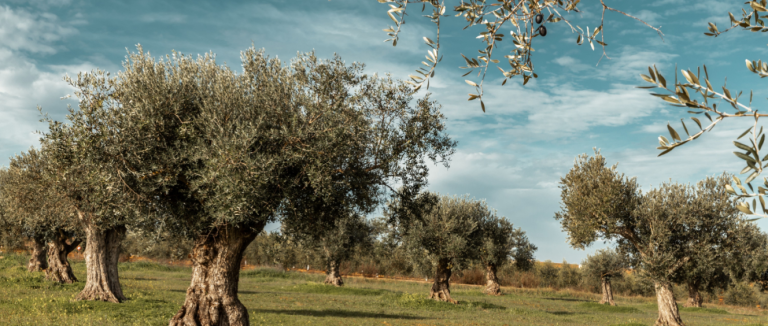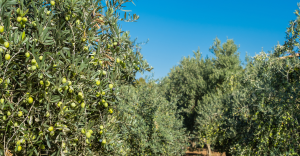When talking about European agriculture, few imagine that one of the richest landscapes in diversity and tradition is found in a modestly sized country: Portugal. From century-old vineyards in the Douro to vast almond plantations in the Alentejo, the Portuguese countryside holds a unique combination of history, innovation, and sustainability.
But what truly drives Portuguese agriculture today? What are its main products, challenges, and strategies for the future? In this article, you will discover how the country transforms climate, culture, and technology into productive strength—and why it is worth following this story closely.
A Portrait of Agriculture in Portugal
According to data from the National Statistics Institute (INE), the agricultural sector represents about 2% of Portugal’s Gross Domestic Product (GDP), but its importance goes beyond numbers. The sector supplies the domestic market with fruits, vegetables, olive oil, wine, and cereals, as well as exporting high value-added products. Participation in the international market, especially with products such as olive oil, wine, Rocha pear, and almonds, places the country in a strategic position in European agribusiness.
Additionally, the sector has a significant social role: it provides jobs in rural areas, helps retain populations in the countryside, and directly contributes to the preservation of the environment and the cultural identity of the country.
Climate and Geography: Diversity as an Ally
Portugal’s geography is marked by great climatic variety, which allows for a wide range of agricultural crops. In the north, with a wetter and colder climate, corn, vineyards, and dairy cattle predominate. In the center and south of the country, the Mediterranean climate, with dry and hot summers, is ideal for crops such as olive trees, vineyards, almonds, and rainfed cereals.
The main agricultural regions include:
- Alentejo: large-scale farming and modernization; focus on cereals, vineyards, olive groves, and cattle
- Ribatejo and Oeste: areas for vegetables and fruits, such as Rocha pear
- Northern Region: wine production, especially in the Douro Valley
- Algarve: focus on citrus fruits and products aimed at the domestic market and tourism
The combination of climate, landscape, and agricultural tradition enables the country to maintain diverse production adapted to regional characteristics.
Key Crops in Portugal
Portugal is recognized for several agricultural products that carry national identity and a strong presence in international markets. The main ones include:
- Wine: one of the nation’s greatest prides; Portugal is one of the largest wine exporters in the world
- Olive oil: produced mainly in Alentejo, with a focus on quality and traceability
- Rocha pear: an exclusive Portuguese variety with Protected Geographical Indication
- Almonds, walnuts, and chestnuts: gaining ground in global markets
- Citrus fruits and processing tomatoes: important in the south and center
- Vegetables and legumes: serving domestic consumption and occasional exports
Land Structure and Farming Methods
Portugal’s land structure is marked by duality. There are large estates, especially in the south (latifundia in Alentejo), but the north is characterized by fragmented landholdings with small family farms, often focused on subsistence or local production.
In recent years, modernization has advanced through:
- Growing use of drip irrigation and fertigation
- Agricultural mechanization in large-scale regions
- Adoption of integrated and agro-environmental systems
Innovation in the Field: Portugal on the Path to Agriculture 4.0
Although traditional in many aspects, Portugal has also been standing out in agricultural innovation and sustainability. Initiatives include:
- Use of precision technology in large farms
- Application of sensors, drones, and management software
- Support for agroecological and regenerative projects
- Pilot projects in vertical farming and smart greenhouses
These innovations are encouraged by national and European policies, particularly through financing from the Strategic Plan of the Common Agricultural Policy (CAP).
Agricultural Policies and Farmer Incentives
Portugal benefits from the European Union’s Common Agricultural Policy (CAP), the main instrument supporting agriculture in member states. Incentives include:
- Direct payments per cultivated area
- Support linked to environmental preservation and best practices
- Specific programs for young farmers and innovation projects
- Subsidies for sustainable practices and organic production
The new Portuguese CAP strategy also emphasizes ecological transition, digitalization, and energy efficiency in farming.
Sustainability and Organic Agriculture
Portugal has expanded its organic-certified agricultural areas, especially in mountainous regions with lower production pressure. Initiatives include:
- Organic olive oil routes
- Encouragement of crop rotation
- Soil management practices with lower impact
- Integration of pastures and reforestation
The country is also working to make its supply chains more traceable, transparent, and aligned with European consumer demands.
Challenges and the Future of Portuguese Agriculture
Like any agricultural sector, Portugal faces significant challenges:
- Aging rural population
- Shortage of qualified young labor
- Climate change and extreme events (such as prolonged drought)
- Ongoing need for modernization in small farms
Nevertheless, the future points toward a more technological, collaborative agriculture, connected to modern consumer demands, with a focus on quality, sustainability, and high value-added exports.
Tradition, Innovation, and Rural Identity
Portuguese agriculture is marked by an inspiring duality: on one hand, millennia-old traditions that preserve knowledge and flavors; on the other, a consistent shift toward a new, more efficient, and sustainable production cycle. Between harvest weekends and smart greenhouses, the Portuguese countryside remains alive, productive, and full of stories to tell.





